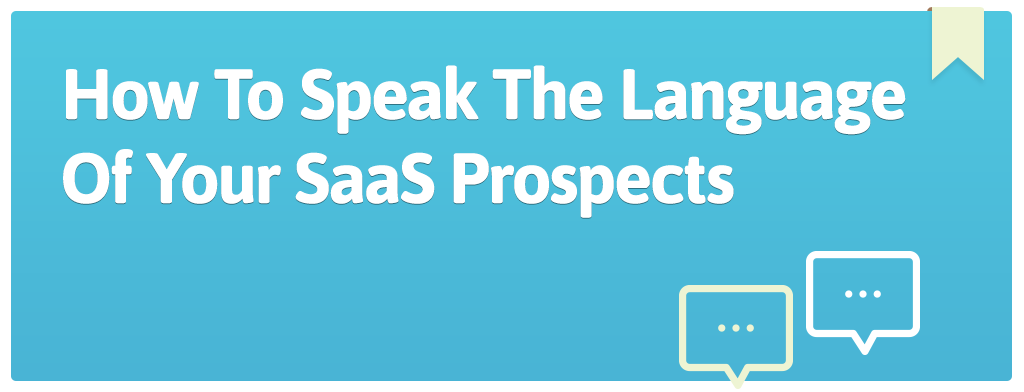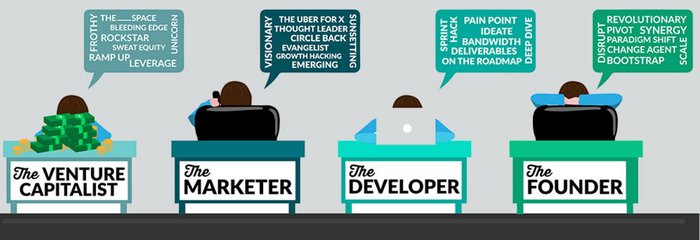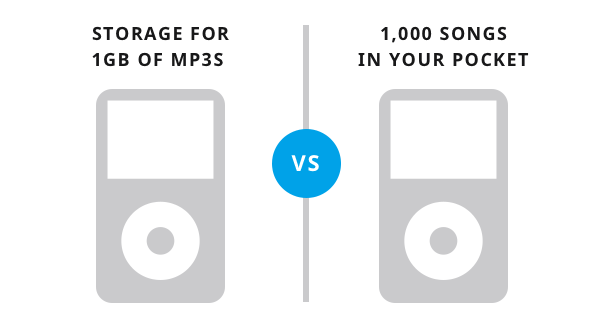
Has your SaaS taken a look at your website and any other materials you produce from the perspective of the prospect whom you’re trying to attract?
We should hope so, yet there are so many SaaS out there who seem to write their websites more for themselves and their perspective than the prospect’s.
Did you know it only takes 50 milliseconds (0.05 seconds) for a user to form an impression of your website? This means that if your website fails to grab your prospect quickly, they’re probably clicking away to look at something else.
How does your SaaS ensure you really “get” your prospects? We’ve got a few ideas:
Client First, Always
It’s an old mantra that still remains true in every aspect of promoting your SaaS: start with the client. (In case you missed it, we created a worksheet for identifying the characteristics of your “ideal client” here).
Sometimes, especially if you’re a very small team (perhaps even just one or two founding developers), the “customer friendly” or “marketing” sides of the operation come down to you, whether or not they are your forte.
This can mean that your “ideal client” isn’t really identified with the kind of precision which someone with a marketing background would use, and your messaging may not be as effective. It’s understandable really, especially when you’re wearing many hats, but this piece is important to get right if you want to really draw in the right audience.
For example, how tech-savvy are they really? The person who you’re marketing to could be an end-user who only understands tech in as much as that they want to achieve X, preferably as easily as possible.
Your Website
One thing we’ve noticed about SaaS websites, especially those which are in an early start-up stage, is that they can be virtually incomprehensible to one who has just landed on the site. Remember that stat about grabbing attention at the start? Yeah, not going to happen if the website user doesn’t understand what you’re about virtually immediately.
Sometimes SaaS websites just try too hard. You’re excited about your product and you’ve put a lot of work into it, so your homepage tries to let users know about every awesome feature you’ve worked on at once. If you’ve been in touch with Silicon Valley “buzz” speak, there may be liberal sprinklings of words such as “disrupt”, “innovative”, “ideate” or “road map.”

Source: Forbes
While it’s fine to talk about your features on your website, the point is that if a whole lot of jargon is the first thing a user sees, they’re probably being left confused and failing to understand what you’re immediately about.
A rule of thumb is that users should understand within 3 or 4 seconds of landing on your website exactly what you’re about and whether they might be an appropriate user of your product. If they don’t “get it” quickly, they’ll probably click away and go elsewhere.
Your Value Proposition
Everyone needs one, a unique value proposition which concisely tells the user exactly what you do – what unique problem are you solving? This should preferably be one of the first things a website user will see when they land on your site, so keep it obvious and above the fold.
A good way of formatting a value proposition is to simply state what you do and who you do it for (or why you are the best at what you do).
For example:

What do we do? Prevent failed payments. Who do we do it for? SaaS apps.

What do they do? Small business accounting. Who for? Non-accountants.
The idea is that you state plainly and immediately what you do, in language that your target audience will understand. This is the first step to not losing them from your website!
Be Benefit-Driven
The next step in speaking the language of your prospects is to get quickly to the point of, “What’s in it for me?” We talked about SaaS who splatter all their features over the home page and how this could be confusing to visitors.
Why? Often those features are discussed with more “tech speak” than the prospect can cope with before several coffees. So, while they may be the most “innovative” thing out, that’s not within the understanding of the prospect. (Unless of course, your ideal prospect is highly technical.)
For those who are targeting a less technical end-user, getting to the point of what your benefits are to the user – especially in their own language – will get you further.
A great example of what we mean can be found in this Helpscout depiction of an ad for Apple iPod when the whole concept was brand-new.

You probably know what “1GB of MP3s” means now, but it certainly wasn’t common knowledge back when the iPod was first introduced. Instead, Apple cut straight to the heart of what the benefit was to their customer; “1000 songs in your pocket.” As HelpScout point out, “features tell, but benefits sell.”
Frankly, a prospect doesn’t really care about the precise feature. What they really care about is that it will get the end results that they are looking for. If your desired audience is not as technical as you are, bamboozling them with a whole lot of feature descriptions up front may not help your cause.
Ask A User
One of the best things your SaaS can do to ensure that your target audience will understand you is simply to ask some end-users to assess your website for understanding and user-friendliness. Do they “get” what you’re about quickly? Do they understand from the start whether or not your product is something targeted at them (as opposed to another customer group, like large enterprises, for example)?
This is not to say that you treat people like idiots, but if you go too complex, they could easily assume “this must be for a more technical audience.”
The User Is My Mom have a service like this for UX, the basic premise being, “If my Mom doesn’t get it, your audience probably won’t either.” This is a great principle to keep in mind when considering the language and copy for your website.
Your Content
Does your SaaS have a blog or other forms of content marketing happening? Sometimes technically proficient founders think it’s a great idea to blog about the stuff they know. The only problem is that there could be a disconnect between that and what your target audience a) wants to see and b) understands.
Again, you need to begin with the target customer in mind when it comes to any of your content. That UX piece might be great for your peers, but outside of scope for your desired users.
Before taking to your keyboard, ask yourself these questions of the content:
- Who is my audience?
- What will they get out of it?
- What is my desired outcome of the content?
That highly technical content you enjoy writing has it’s place – probably more in forums where you’ll find your peers. But, it’s not really going to achieve anything for you on your SaaS website if your desired user is not particularly technical.
It’s worth remembering that a prospect may be first introduced to your SaaS through a piece of content they come across, so make sure all content is well targeted to deliver value to that ideal client.
Final Thoughts
We’ve probably all come across a SaaS website which we didn’t understand immediately. If SaaS want to attract the right prospects and not put them off from the start, then speaking their language and having a clearly stated value proposition is a must.
All copy and content should begin and end with the ideal customer in mind. If the purchaser of your product is not likely to be highly technical, then tone back the jargon and ensure you’re using plain language which is benefit-driven and speaks to them.
Keep this in mind with any blog or other branded content you produce too. You don’t know how a prospect might come across your SaaS, so make sure everything is geared to them rather than your peers.
